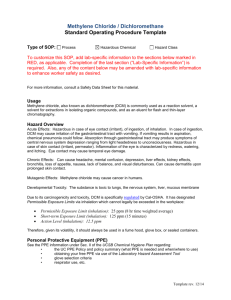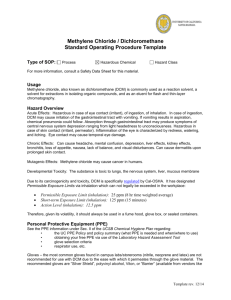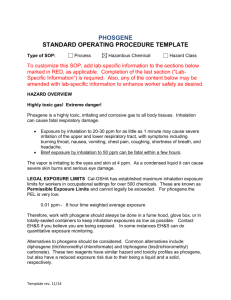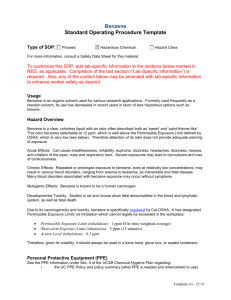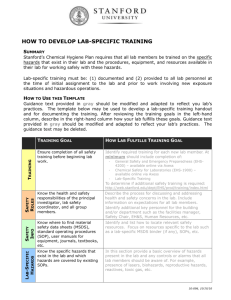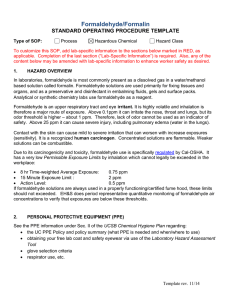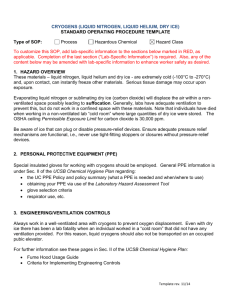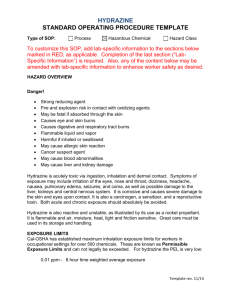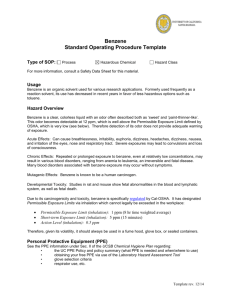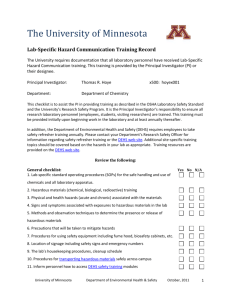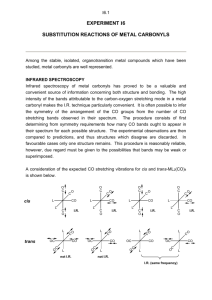Metal carbonyls
advertisement
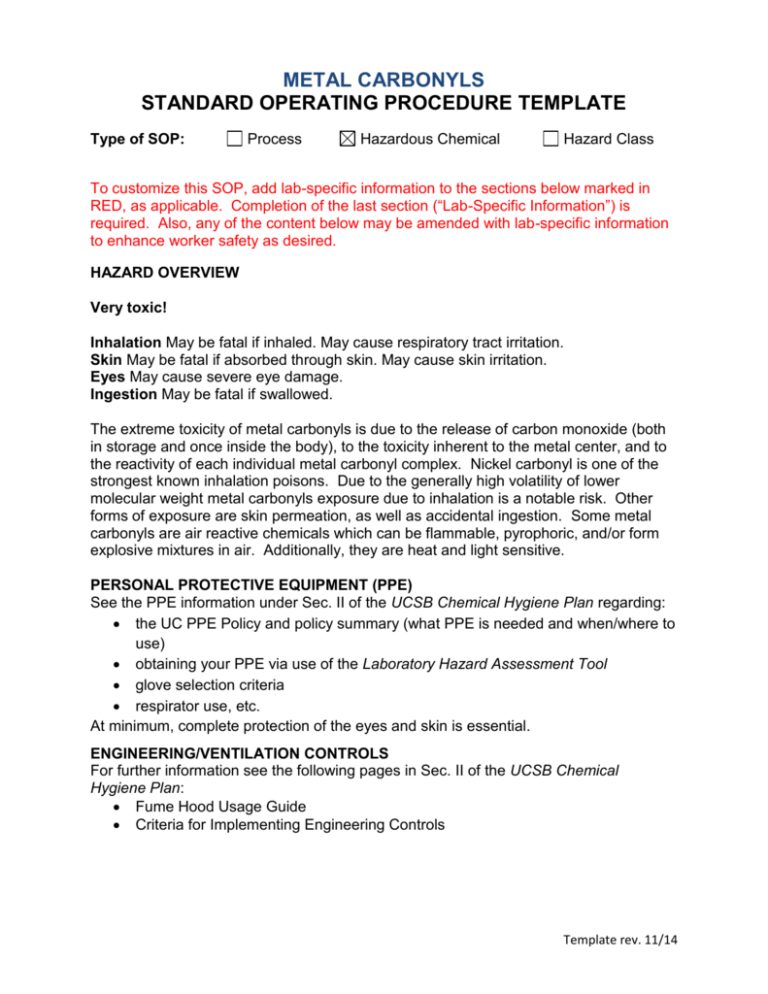
METAL CARBONYLS STANDARD OPERATING PROCEDURE TEMPLATE Type of SOP: Process Hazardous Chemical Hazard Class To customize this SOP, add lab-specific information to the sections below marked in RED, as applicable. Completion of the last section (“Lab-Specific Information”) is required. Also, any of the content below may be amended with lab-specific information to enhance worker safety as desired. HAZARD OVERVIEW Very toxic! Inhalation May be fatal if inhaled. May cause respiratory tract irritation. Skin May be fatal if absorbed through skin. May cause skin irritation. Eyes May cause severe eye damage. Ingestion May be fatal if swallowed. The extreme toxicity of metal carbonyls is due to the release of carbon monoxide (both in storage and once inside the body), to the toxicity inherent to the metal center, and to the reactivity of each individual metal carbonyl complex. Nickel carbonyl is one of the strongest known inhalation poisons. Due to the generally high volatility of lower molecular weight metal carbonyls exposure due to inhalation is a notable risk. Other forms of exposure are skin permeation, as well as accidental ingestion. Some metal carbonyls are air reactive chemicals which can be flammable, pyrophoric, and/or form explosive mixtures in air. Additionally, they are heat and light sensitive. PERSONAL PROTECTIVE EQUIPMENT (PPE) See the PPE information under Sec. II of the UCSB Chemical Hygiene Plan regarding: the UC PPE Policy and policy summary (what PPE is needed and when/where to use) obtaining your PPE via use of the Laboratory Hazard Assessment Tool glove selection criteria respirator use, etc. At minimum, complete protection of the eyes and skin is essential. ENGINEERING/VENTILATION CONTROLS For further information see the following pages in Sec. II of the UCSB Chemical Hygiene Plan: Fume Hood Usage Guide Criteria for Implementing Engineering Controls Template rev. 11/14 SPECIAL HANDLING PROCEDURES AND STORAGE REQUIREMENTS Precautions for safe handling: Avoid contact with skin and eyes. Avoid inhalation of vapor or mist. Use explosion-proof equipment. Keep away from sources of ignition/sparks. Take measures to prevent the build-up of electrostatic charge. Conditions for safe storage: Store in cool place. Keep container tightly closed in a dry and well-ventilated place. Toxic carbon monoxide can be released during storage and could be fatal without adequate ventilation. Containers which are opened must be carefully resealed and kept upright to prevent leakage. Recommended storage temperature: 2 - 8 °C (always store inside a refrigerator that is approved for flammable chemical storage). Heat, air & light sensitive. Handle and store under inert gas. Always follow the specific storage information provided by the supplier. SPILL AND INCIDENT PROCEDURES See directions under the “Chemical Incident” tab of the UCSB Emergency Information Flipchart – should already be posted in all labs. DECONTAMINATION Using proper personal protective equipment as outlined above, decontaminate equipment and bench tops using soap and water and properly dispose of all chemical and contaminated disposables as hazardous waste following the guidelines below. WASTE DISPOSAL See “Chemical Waste Disposal” in Sec. II of the UCSB Chemical Hygiene Plan. PRIOR APPROVAL/REVIEW REQUIRED As they deem necessary, the PI/supervisor should insert here any prior approval or review needed before an individual can do the operation. DESIGNATED AREA As they deem necessary, the PI/supervisor should insert here any information about whether a special use-area is designated for this material/process. SAFETY DATA SHEETS Found online at: http://ehs.ucsb.edu/labsafety/msds 2 LAB-SPECIFIC INFORMATION (required) (Examples of appropriate content) Add appropriate lab-specific information here describing how this material(s) is generally used. E.g., name of protocol, typical frequency done, quantities used, temperature and any additional safety measures, etc. 3
